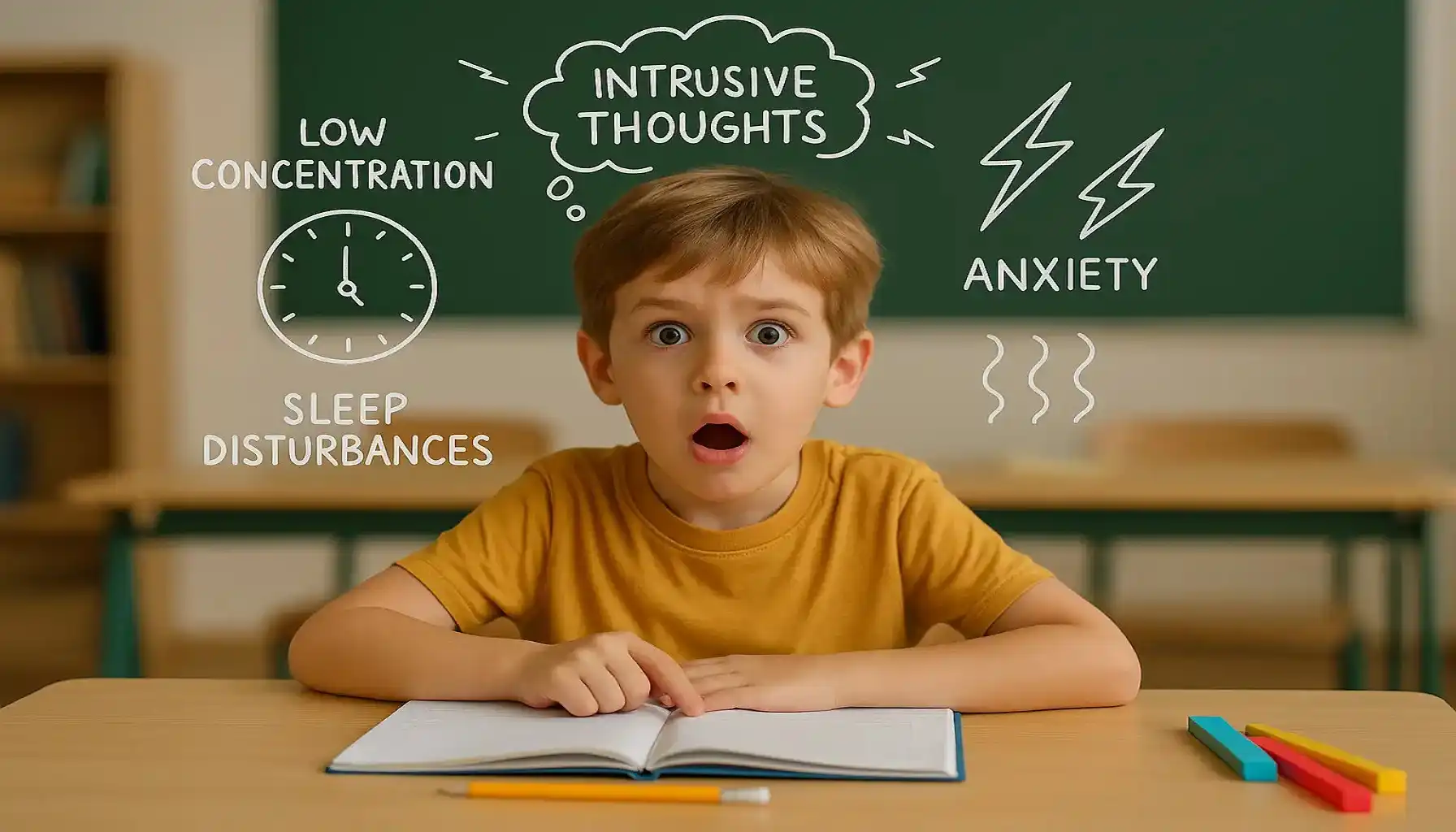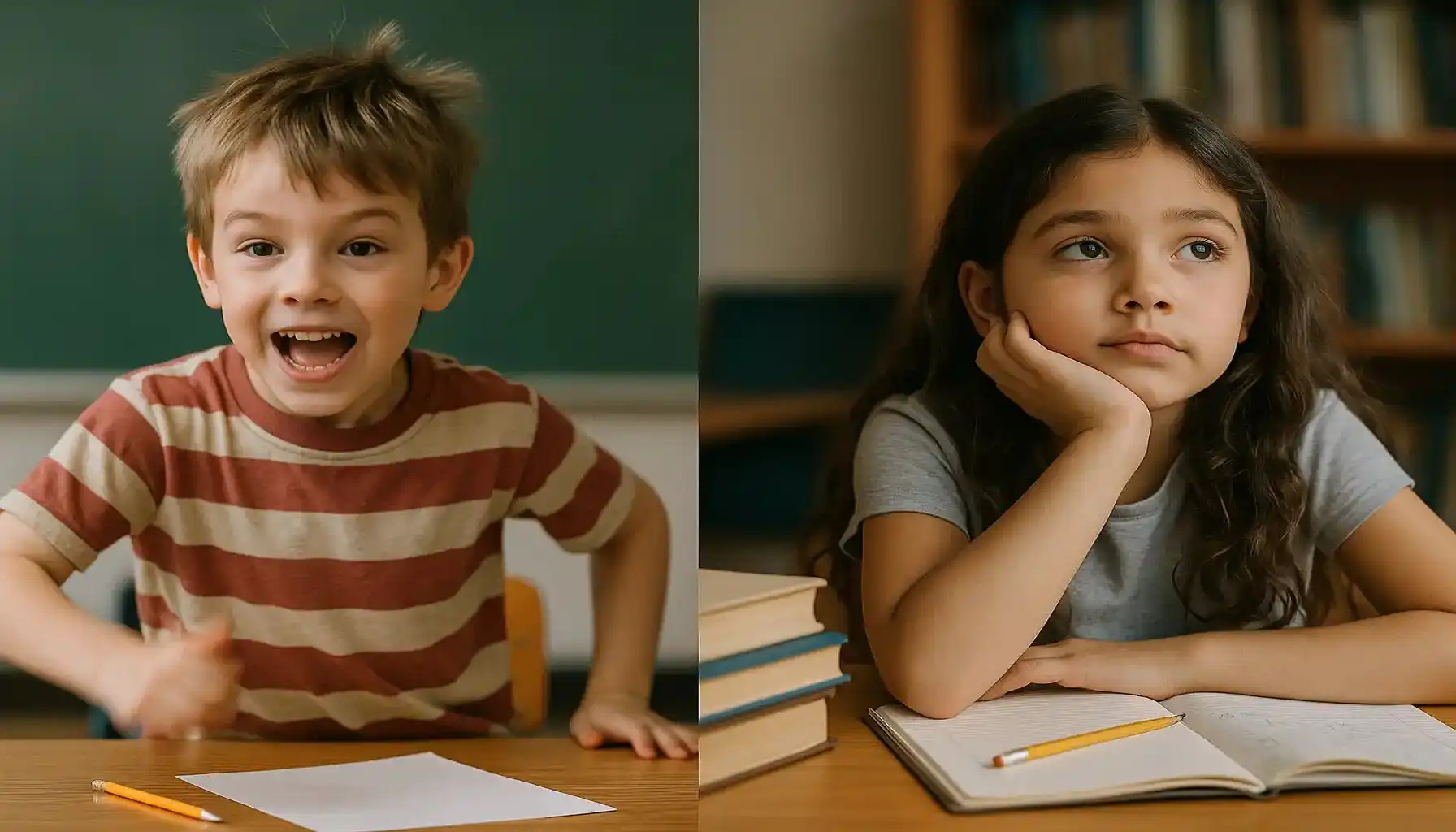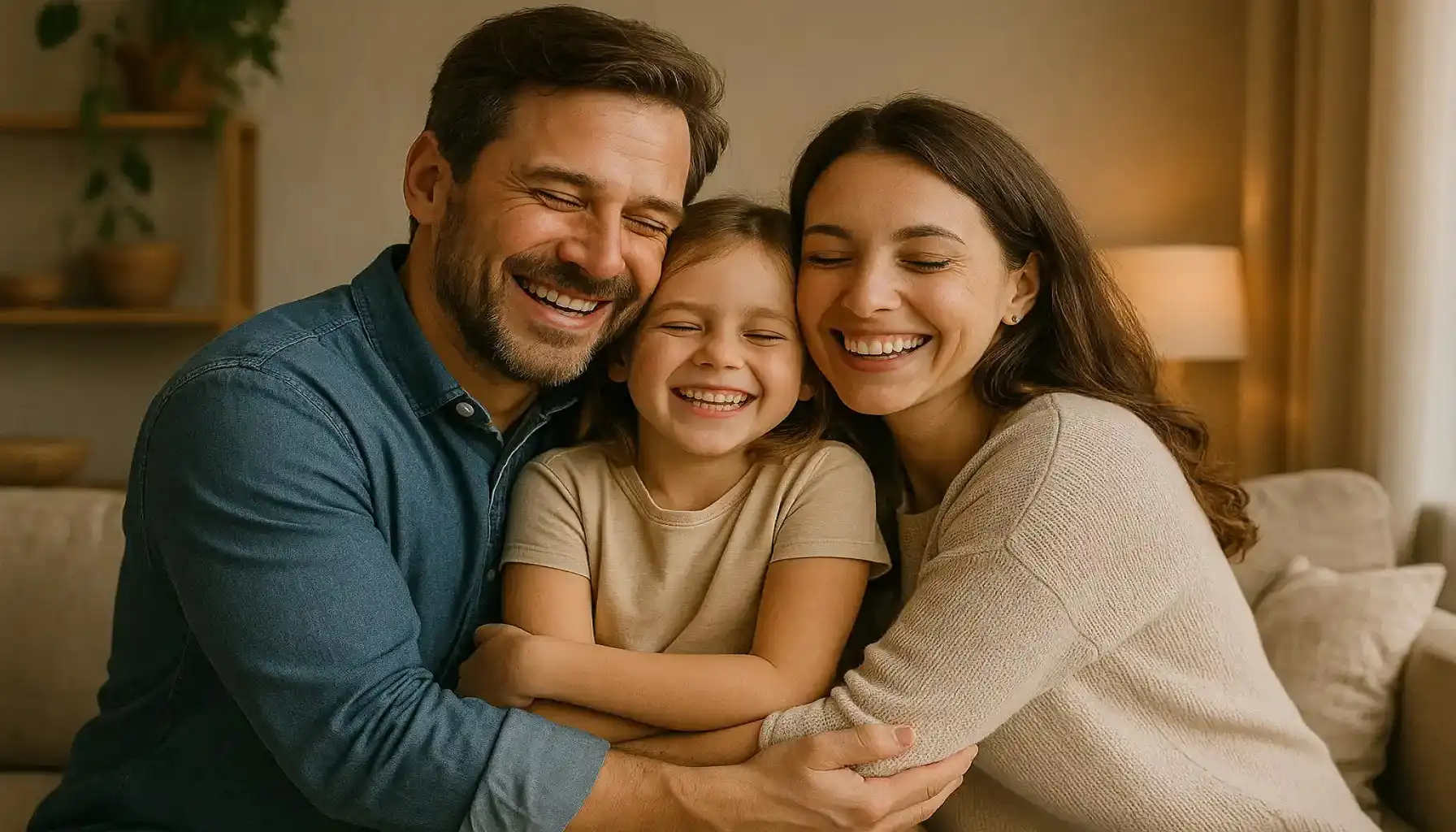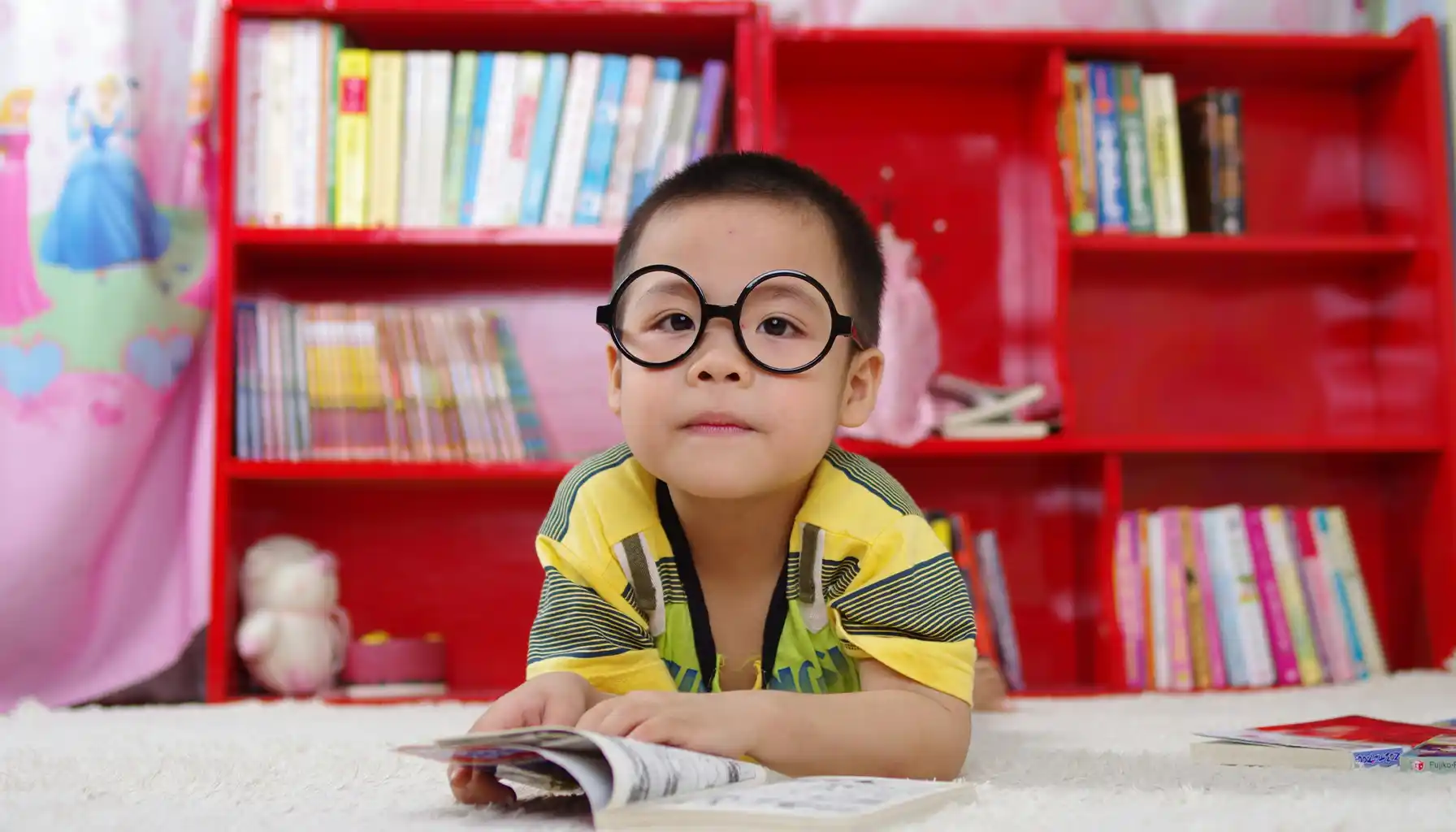Recognizing ADHD Symptoms in Kids (Ages 3-12)

Contents:
ADHD (Attention-Deficit/Hyperactivity Disorder) is a neurodevelopmental condition that affects how the brain regulates attention, impulse control, and activity levels. The ADHD in young children symptoms can be subtle and even stay unnoticed, overlooked as childish behavior. Yet, if diagnosed early, the negative future outcome can be minimised and controlled.
Treatment for Children:
Medications: Stimulants (e.g., methylphenidate, adderall, atomoxetine) or non-stimulants (e.g., atomoxetine) to improve focus and reduce hyperactivity, with careful monitoring for growth and side effects;
Therapy: Behavioral therapy to teach coping skills and emotional regulation; parent training to help families develop consistent strategies for managing behaviors and supporting their child's development;
Lifestyle adjustments: Creating structured routines, establishing clear expectations, using cognitive games for development, ensuring adequate sleep and physical activity, limiting screen time, and using organizational tools like visual schedules to support executive functioning development.

What Are Symptoms of ADHD in Children That Often Stay Unnoticed
While many associate ADHD with visible behaviors like fidgeting or impulsivity, there are often less obvious, "hidden" symptoms that can go unnoticed. These include:
Emotional dysregulation (difficulty managing emotions)
Time blindness (losing track of time)
Racing or intrusive thoughts
Sensory sensitivities (overwhelm from sounds, lights, or textures)
Social anxiety or withdrawal
Sleep disturbances and chronic fatigue
Low self-esteem, guilt, or shame
These internal experiences can significantly impact a child’s daily life and are just as important to recognize as external behaviors.
ADHD Symptoms in Children Checklist: Age-by-Age
Preschoolers (Ages 3-4):
Avoid activities requiring focus for more than a minute or two
Quickly lose interest and switch activities
Excessive talking or noisiness compared to peers
Climbing or running when told not to
Difficulty hopping on one foot by age 4
Constant restlessness or need to move
Fearlessness leading to dangerous situations
Aggression with playmates
Quick to warm up to strangers
Frequent injuries due to impulsivity
Early School Age (Ages 5-7):
Fails to pay attention to details, makes careless mistakes
Difficulty staying focused during tasks or play
Appears not to listen when spoken to directly
Trouble following instructions or finishing tasks
Disorganized with tasks and activities
Avoids or dislikes tasks needing sustained effort (like homework)
Frequently loses items needed for tasks
Easily distracted by unrelated stimuli
Forgetful in daily routines
Older Children (Ages 8-12):
Continued inattention and disorganization
Hyperactivity may show as restlessness or feeling “on the go”
Impulsivity: blurting out answers, interrupting others, trouble waiting their turn
Emotional outbursts or intense reactions to minor frustrations
Academic struggles, difficulty with peer relationships

ADHD Symptoms in Children Boys
Boys are more likely to be diagnosed with ADHD, often because their presentations are more external and disruptive. Common symptoms of ADHD in children boys include:
Hyperactivity: running, climbing, inability to sit still
Impulsivity: acting without thinking, interrupting, risk-taking
Physical aggression
More likely to be noticed and referred for evaluation due to disruptive behaviors
ADHD Symptoms in Children Girls
Girls with ADHD are often underdiagnosed because their presentations are subtler. Here are ADHD in children symptoms girls you should watch for:
Inattentiveness: daydreaming, difficulty focusing, disorganization
Quietly not paying attention rather than being disruptive
Internalized symptoms of ADHD in children girls: low self-esteem, social withdrawal, anxiety
Verbal rather than physical aggression
Higher risk for undiagnosed ADHD, which can lead to anxiety, depression, and academic difficulties later on
Frequent Questions About ADHD Symptoms in Young Children

When do inattentive ADHD symptoms in children start?
ADHD attention deficit hyperactivity disorder in children symptoms often appear before age 12 and can be noticeable as early as age 3, especially in settings that require sustained attention or impulse control.
What causes symptoms of ADHD in young children?
The exact cause is unknown, but factors include genetics, environmental exposures (like lead), prenatal substance exposure, and premature birth.
Can ADHD and anxiety symptoms in children go away?
ADHD is a chronic condition, but symptoms can change with age. Some children may learn coping strategies or see a reduction in certain symptoms, though most will continue to experience some challenges into adolescence and adulthood. Anxiety symptoms may fluctuate or improve with support and treatment.
Are signs and symptoms of ADHD in children born-based or developed?
ADHD has a strong genetic component, but environmental factors and early brain development also play roles. It is not caused by parenting style or diet.
How to divide normal activity from ADHD signs and symptoms in children?
All children are active and distractible at times. What are the symptoms of ADHD in children and not a normal behavior is defined by frequency. If certain situations occur in multiple settings (home, school), and significantly interfere with daily functioning and development, it's time to see a professional.
How might ADHD symptoms present differently in adults compared to children?
Children often show overt hyperactivity and impulsivity, while adults may experience more internal symptoms: restlessness, disorganization, time management issues, and emotional dysregulation. Hyperactivity in adults may manifest as inner restlessness rather than physical movement.





